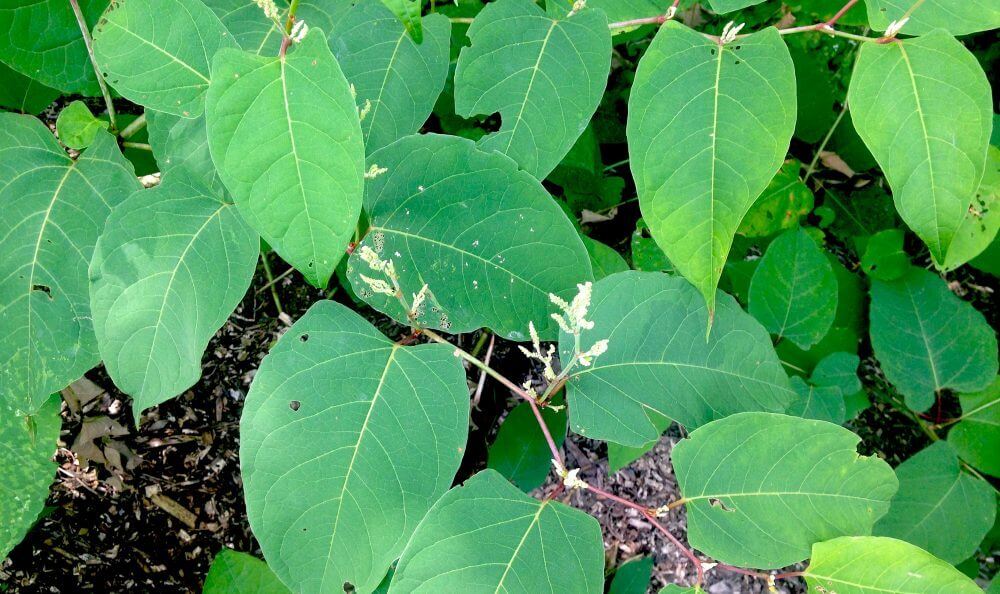Japanese knotweed is one of the most aggressive invasive plants. It quickly forms dense thickets and establishes an extensive rhizome system that makes removal very difficult. The most effective eradication method is a combination of mechanical removal followed by properly-timed herbicide treatments. Chippers can help landowners develop and implement the proper management program for controlling knotweed and other invasive plants.
What is it? In the spring, reddish/purple shoots appear from the ground. These can grow almost an inch a day, thus rapidly forming into dense stands of bamboo-like stems that develop green heart or shield-shaped leaves.
How does it spread? Broken pieces of stem and rhizomes can be washed down stream, moved by equipment, or moved in contaminated fill to create new infestations. Plants can reproduce by seed, but more commonly spread through vigorous wide-spreading rhizomes.
How do you kill it? The most effective method involves cutting down above ground growth followed by properly-timed herbicide treatments to eliminate regrowth.
How to dispose of it? Put cut stems into garbage bags and allow to rot completely before sending to a landfill. Cut stems can also be piled on a tarp and allowed to dry out completely. Dried stems can be burned, or monitored for any re-sprouting.
Don’t Mow or weedwack in such a way that large pieces of the plant are being spread beyond the infestation or into waterways, and don’t compost any part of the plant.

The Invasive Plant Taking Over New England Yards
Tags:
chippers
, New Hampshire
, Vermont
, plant health care
, Japanese knotweed
, knotweed
, plant removal

